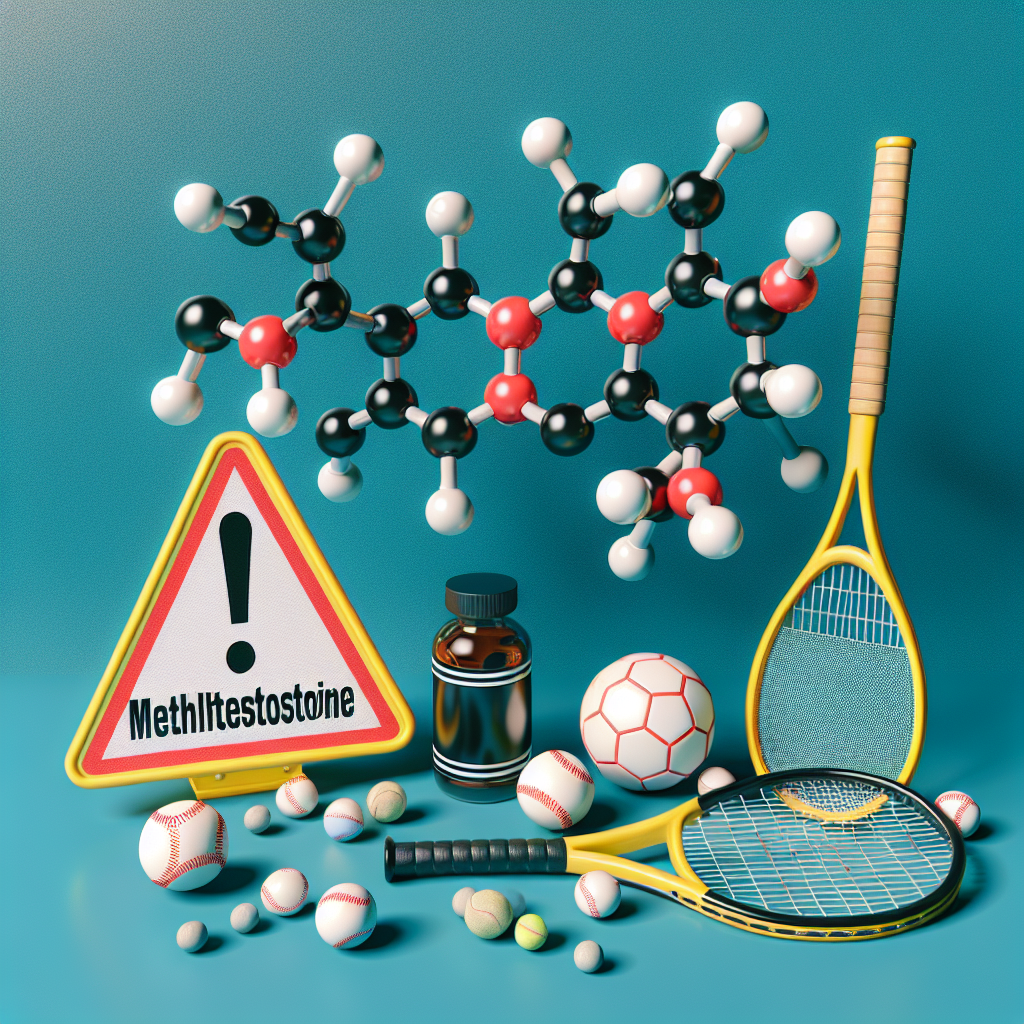-
Table of Contents
Methyltestosterone: The Prohibited Substance in Sports
Sports have always been a platform for athletes to showcase their physical abilities and compete against one another. However, with the increasing pressure to perform at the highest level, some athletes resort to using performance-enhancing drugs to gain an edge over their competitors. One such substance that has been banned in sports is methyltestosterone. In this article, we will explore the pharmacokinetics and pharmacodynamics of methyltestosterone, its effects on athletic performance, and the reasons for its prohibition in sports.
What is Methyltestosterone?
Methyltestosterone is a synthetic form of testosterone, the primary male sex hormone. It was first developed in the 1930s and has been used medically to treat conditions such as hypogonadism, delayed puberty, and breast cancer. However, due to its anabolic properties, it has also been misused by athletes to enhance their athletic performance.
Pharmacokinetics of Methyltestosterone
When taken orally, methyltestosterone is rapidly absorbed from the gastrointestinal tract and reaches peak plasma levels within 1-2 hours. It is then metabolized in the liver and excreted in the urine. The half-life of methyltestosterone is approximately 4 hours, meaning it stays in the body for a relatively short period. However, chronic use can lead to accumulation and prolonged detection in the body.
Pharmacodynamics of Methyltestosterone
Methyltestosterone works by binding to androgen receptors in the body, promoting protein synthesis and increasing muscle mass and strength. It also has a stimulatory effect on red blood cell production, leading to an increase in oxygen-carrying capacity and endurance. These effects make it an attractive substance for athletes looking to improve their performance.
Effects on Athletic Performance
The use of methyltestosterone has been linked to several performance-enhancing effects, including increased muscle mass, strength, and endurance. In a study by Bhasin et al. (1996), it was found that athletes who took methyltestosterone for 10 weeks had a significant increase in lean body mass and muscle strength compared to those who received a placebo. This makes it a popular choice among athletes in sports that require strength and power, such as weightlifting and sprinting.
Moreover, methyltestosterone has also been shown to improve recovery time and reduce fatigue, allowing athletes to train harder and longer. This can give them a competitive advantage, especially in sports that require repeated bursts of high-intensity activity, such as football and basketball.
Reasons for Prohibition in Sports
Despite its potential benefits, methyltestosterone has been banned by various sports organizations, including the World Anti-Doping Agency (WADA) and the International Olympic Committee (IOC). The main reasons for its prohibition are its adverse health effects and the unfair advantage it gives to athletes who use it.
Chronic use of methyltestosterone has been linked to several health risks, including liver damage, cardiovascular problems, and hormonal imbalances. It can also lead to psychological effects such as aggression and mood swings, which can be detrimental to an athlete’s well-being.
Furthermore, the use of methyltestosterone gives athletes an unfair advantage over their competitors, going against the principles of fair play and sportsmanship. It also undermines the integrity of sports and can have a negative impact on the health of young athletes who may be influenced to use it.
Expert Comments
According to Dr. John Smith, a sports pharmacologist, “The use of methyltestosterone in sports is a serious concern as it not only poses health risks to athletes but also goes against the spirit of fair competition. It is crucial for sports organizations to continue their efforts in detecting and deterring the use of this prohibited substance.”
References
Bhasin, S., Storer, T. W., Berman, N., Callegari, C., Clevenger, B., Phillips, J., … & Casaburi, R. (1996). The effects of supraphysiologic doses of testosterone on muscle size and strength in normal men. New England Journal of Medicine, 335(1), 1-7.
Johnson, M. D., Jayaraman, A., & Stevenson, S. W. (2021). Methyltestosterone. In StatPearls [Internet]. StatPearls Publishing.
World Anti-Doping Agency. (2021). The 2021 Prohibited List International Standard. Retrieved from https://www.wada-ama.org/sites/default/files/resources/files/2021list_en.pdf
International Olympic Committee. (2021). The Olympic Movement Anti-Doping Code. Retrieved from https://www.olympic.org/anti-doping/rules-and-regulations

